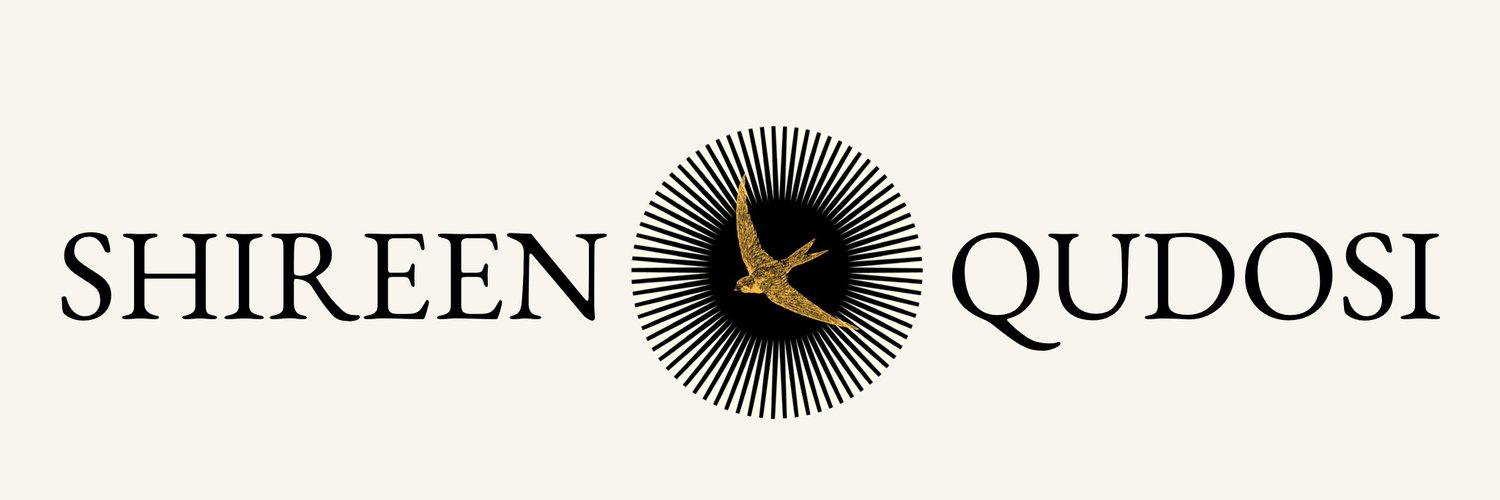 Image 1 of
Image 1 of


The Satanic Verses: Reimagining the Story of the Cranes
Before a British Orientalist renamed it, a history of Islamic philosophers all referred to the controversial ‘Satanic verse’ in the Quran as The Story of the Cranes. The story has nothing to do with satanic influences. The Story of the Cranes is a story of goddesses as messengers to the divine, no more or no less divine than the breath we blow to the heavens after each prayer as Muslims. It’s a story of beauty, and a moment rich with grace.
The Story of the Cranes (misnomered as the Satanic verses) speaks to the sacred feminine emissaries of the natural world. Birds as messengers in a beautiful and symbolic symphony of prayers ascending to the God of all realms. The Story of the Cranes is one verse among many in the Quran that speak to the dark feminine aspect of God, an aspect that unveils Islam as the unfurling rose rich with layers of hidden mysteries.
Before a British Orientalist renamed it, a history of Islamic philosophers all referred to the controversial ‘Satanic verse’ in the Quran as The Story of the Cranes. The story has nothing to do with satanic influences. The Story of the Cranes is a story of goddesses as messengers to the divine, no more or no less divine than the breath we blow to the heavens after each prayer as Muslims. It’s a story of beauty, and a moment rich with grace.
The Story of the Cranes (misnomered as the Satanic verses) speaks to the sacred feminine emissaries of the natural world. Birds as messengers in a beautiful and symbolic symphony of prayers ascending to the God of all realms. The Story of the Cranes is one verse among many in the Quran that speak to the dark feminine aspect of God, an aspect that unveils Islam as the unfurling rose rich with layers of hidden mysteries.
Before a British Orientalist renamed it, a history of Islamic philosophers all referred to the controversial ‘Satanic verse’ in the Quran as The Story of the Cranes. The story has nothing to do with satanic influences. The Story of the Cranes is a story of goddesses as messengers to the divine, no more or no less divine than the breath we blow to the heavens after each prayer as Muslims. It’s a story of beauty, and a moment rich with grace.
The Story of the Cranes (misnomered as the Satanic verses) speaks to the sacred feminine emissaries of the natural world. Birds as messengers in a beautiful and symbolic symphony of prayers ascending to the God of all realms. The Story of the Cranes is one verse among many in the Quran that speak to the dark feminine aspect of God, an aspect that unveils Islam as the unfurling rose rich with layers of hidden mysteries.
The Satanic Verses: Reimagining the Story of the Cranes is an essay excerpt from The Song of the Human Heart: Dawn of the Dark Feminine in Islam. Pulled as an essay from the broader work, Reimagining the Story of the Cranes offers a focused telling of the story of Islam around its most controversial and tabooed history.
Throughout her work, Shireen Qudosi looks at the stories of faith through a lens that merges belief with myth, history, story, and scripture, to arrive at an older Islam — Allah’s Islam. Allah’s Islam is the Islam beneath the rubble of what men have done to it — an Islam of the Dark, the primordial feminine aspect of God. The Dark is the other eye of God alongside the Light, across a face of a God that is nebulous and unknowable in our infancy as humanity.
Shireen Qudosi is a writer and speaker across faith, identity, and belonging. She covers issues from extremism to childhood to the feminine through the lens of the sacred. Her story is a winding 42-year journey across literal and figurative landscapes, as a daughter of refugees across three continents, and as an explorer in the wilderness of the heart. As an immigrant over and over again across three continents, Shireen lived the themes coloring our cultural landscape today: migration, radicalization, and adaptation across seismic cultural shifts.
